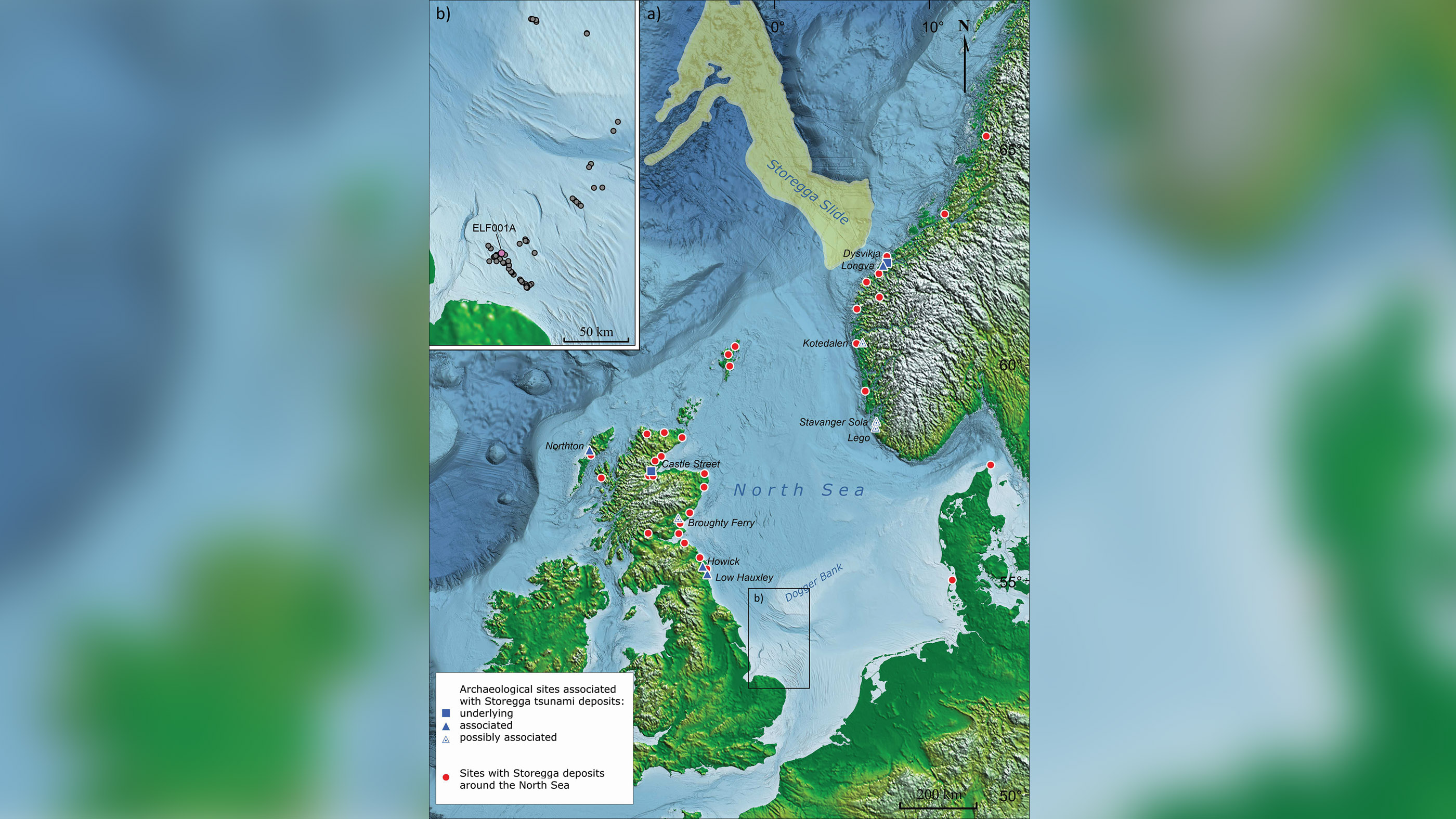The real Brexit: How Britain became an island
More than 8,000 years ago an ice age Brexit saw mainland Britain separate from the rest of Europe.

Thousands of years before Brexit (Britain’s political divorce from the European Union), its physical separation from mainland Europe was well underway.
Around 18,000 years ago, during the Pleistocene Epoch, the majority of modern-day Britain was covered by an ice age, according to Wessex Archaeology, an educational charity based in the UK. This period of glaciation persisted for thousands of years until around 12,000 years ago after a warming climate brought the icy expanse to an end.
In its wake, the areas that today are the North Sea and the English Channel were filled with grassy marshland, wooded valleys and swamps, according to National Geographic. This area of land, known as Doggerland, connected Britain with mainland Europe and spanned over 18,000 square miles (46,620 square kilometers).
What caused Britain to separate from Europe?
The beginning of the end for Britain's connection to Continental Europe began around 8,200 years ago when a massive tsunami struck Doggerland. Off of the coast of Norway, an enormous underwater landslide, known as the Storegga Slide, shifted more than 720 cubic miles (3,000 km³) of material through the water, according to research published in the journal Nature Climate Change. This is 300 times the annual sediment output from all the world’s rivers.
Related: Earth has a new geologic age: The Chibanian
The Storegga Slide was likely triggered by seismic activity following a period of deglaciation across Norway, according to the journal Marine and Petroleum Geology. The rapid movement and displacement of water caused by the slide generated enough energy to create the tsunami. The enormous wave would have reached heights of up to 66 feet (20 meters), according to the journal Nature Climate Change. The tsunami swallowed up Doggerland. It crashed into the north-east of Britain and travelled 25 miles (40 km) inland, making it a newly formed island, according to the BBC.

Tsunami vs climate change
It’s largely accepted that the tsunami triggered by the Storegga Slide triggered is the predominant cause of the downfall of Doggerland and the separation of Britain from mainland Europe. However, a 2020 study published in the journal Antiquity suggests that it may have been climate change that severed the final link between the two.
By analyzing the seabed and its sediments, researchers at the University of Bradford have discovered that the tsunami might not have been completely responsible for sinking Doggerland.
Following the tsunamis flood, researchers proposed that several smaller islands form a "Dogger Archipelago," which remained for almost a thousand years.
Between 8,200 and 8,400 years ago, "the global average sea level rose (possibly in two phases) between 1 and 4 meters [approximately 3 and 13 feet]," the researchers wrote. This rise in sea level was linked to climate change, according to the Smithsonian. By around 7,000 years ago, the Dogger Archipelago would have presumably disappeared, according to the researchers.
Related: What is climate change, and how is it affecting Earth?
Living on Doggerland
When the Storegga tsunami hit the North-west of Europe it not only drowned landmass, but also decimated ancient communities living on Doggerland.
Evidence of human remains has been collected from fishing and dredging along the North Sea bed, according to research published in the Journal of Archaeological Science: Reports. Radiocarbon dating of the remains revealed that the majority belong to Mesolithic humans (between 20,000 and 8,000 years ago) who lived on Doggerland. Archaeological evidence suggests that those that lived on Doggerland were hunter-gatherers, according to National Geographic.
At the time of the tsunami there would have been around 5,000 early humans scattered around Britain, who had travelled from continental Europe following the migration of mammoths and reindeer, according to the BBC.
"If you were standing on the shoreline on that day, 8,200 years ago, there is no doubt it would have been a bad day for you," Vincent Gaffney, professor of landscape archaeology at the University of Bradford, told the Guardian. "It was a catastrophe. Many people, possibly thousands of people, must have died."
The growing sea levels forced the Doggerlanders to flee the lower lands - now sitting under the English Channel - and escape to higher landmasses in modern-day England and the Netherlands, according to National Geographic.
Additional resources
- For more on Britain's sunken land bridge read "Doggerland: The History of the Land that Once Connected Great Britain to Continental Europe" (Charles River Editors, 2021)
- Check out "A Brief History of Earth: Four Billion Years in Eight Chapters " by Andrew H. Knoll (Custom House, 2021)
- To learn more about glacial geology, read "Glacial Geology: Ice Sheets and Landforms" (Wiley, 2009)
Sign up for the Live Science daily newsletter now
Get the world’s most fascinating discoveries delivered straight to your inbox.

Scott is a staff writer for How It Works magazine and has previously written for other science and knowledge outlets, including BBC Wildlife magazine, World of Animals magazine, Space.com and All About History magazine. Scott has a masters in science and environmental journalism and a bachelor's degree in conservation biology degree from the University of Lincoln in the U.K. During his academic and professional career, Scott has participated in several animal conservation projects, including English bird surveys, wolf monitoring in Germany and leopard tracking in South Africa.










